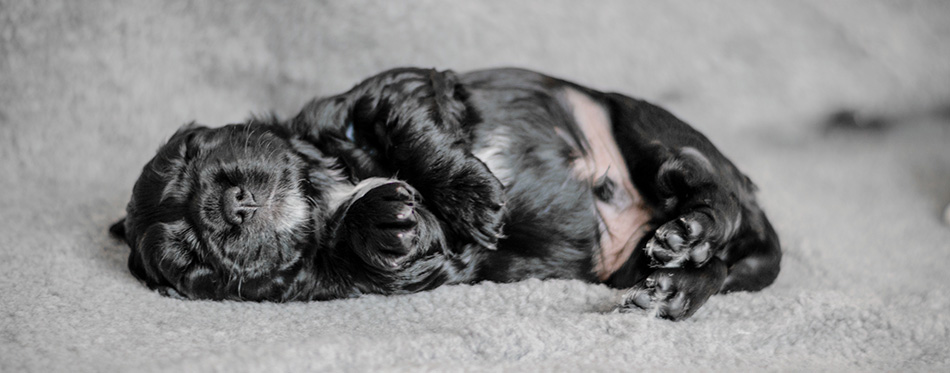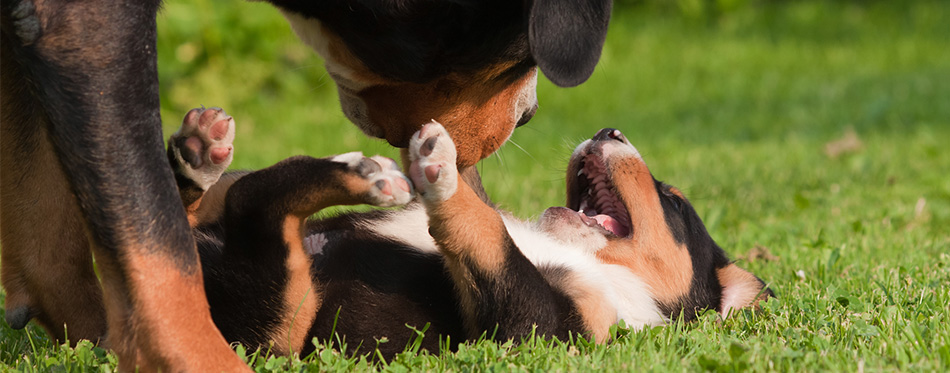It’s an interesting question that has plagued dog owners for years. Given that dogs don’t give birth in the same way that we do, why do they seem to have belly buttons when we rub their belly?
Human navels, or midsection belly buttons, are essentially scars left over from where we were associated with our umbilical ropes amid incubation. While still in the mother’s belly, a child gets nourishment and oxygen and frees itself of waste through that umbilical rope. One end of the line is joined to the center of the child’s stomach and the opposite end of the string is connected to the mother’s placenta.
This placenta is an organ that is created amid pregnancy explicitly to deal with these exceptional jobs. When the infant is conceived and starts breathing without anyone else, the umbilical rope is cut and tied off. Following half a month, the remaining parts of the rope shrink away and all the remaining parts is the thing that we call our belly button.

This procedure isn’t novel to people, since all warm blooded animals share comparable procedures amid advancement and birth. There are two special cases: the marsupials (pouched creatures like kangaroos and possums) likewise have a uterus and placenta, anyway their placenta is progressively similar to a burden sac and the marsupial child is joined to it for a very brief time. The child at that point moves to the pocket and from that point on assembles its supplements from its mom’s nipple while it completes its advancement, and in the interim the umbilical line just vanishes.
On account of pooches, every doggie is conceived in a liquid filled sac; anyway it is as yet associated with its mom’s placenta by means of an umbilical string. When the doggie is out of the uterus, the mother canine will promptly chomp and sever every one of her posterity’s umbilical rope. In 1 to 3 days, the stump of the umbilical string evaporates and tumbles off, before long leaving only a scar.
As a rule the pooch’s subsequent belly button isn’t clear past puppyhood for a few reasons. The span of the canine umbilical line is little. So as to continue, with a human infant, a bigger umbilical line is required, and that obviously implies a greater scar. The doggie’s umbilical scar recuperates into a little cut, as opposed to a round gap. Besides, this area is not long after secured with fur which makes it progressively harder to discover.
The puppy’s belly button does not resemble the human belly button. We have innies (like a little gap or pit) and outies (like a little knot). For canines, the midsection catch is commonly only a level scar (never an innie).
So how would you discover your canine’s belly button? It ought to be situated amidst the pooch’s stomach area, simply under where the rib cage closes, and simply over a fanciful line denoting the highest point of the pelvis. For most canines it will resemble a little level vertical scar, or maybe a round or oval wrinkle on the skin. Now and again the hair on the pooch’s stomach may even whirl or frame a tuft close to the belly button zone. In some cases it is simpler to discover it by squeezing your fingers around that area, since it is sporadically difficult to see it regardless of whether you get the correct area. To your testing fingers, it should feel like a touch of firm tissue just underneath the skin (since the canine belly button is only a little bunch of scar tissue).
Dogs give little consideration to their own belly buttons; in any case, a few puppies appear to be entranced with human belly buttons, particularly those which are the innie assortment. That little pit amidst your guts draws in build up, yet in addition traps sweat. So on the off chance that you sweat a bit, it may prompt the development of a sufficient aroma to pull in investigations by your puppy’s nose and tongue.
In conclusion, even though our pets most likely invest less energy looking at it than we do, every single placental warm blooded creature, including dogs, felines, rabbits, ponies and even hamsters, who get oxygen and supplements through an umbilical rope while in the belly, have a navel. When the umbilical rope is expelled during childbirth, and the stomach dividers close up, the scar left from this outcomes in your pet’s belly button.
The midsection catch is only a scar, and it’s left subsequent to removing the umbilical string in creatures. The umbilical string provides regular supplements from the mother to creating child (or tiny puppy).
Instead of being evident like the human stomach belly button, a pooches belly button is typically minimal in excess of a little, level scar that is darkened by skin. You’ve likely never seen your pooches possess a belly button!

To summarize, little dogs don’t have evident belly buttons for a couple of reasons: the span of their umbilical line is little. Growing a human child requires a greater umbilical line, thus a greater scar. A doggie’s scar mends into a little cut as opposed to a round opening. Furthermore, the territory is immediately secured with hide, making location progressively troublesome. A canines belly button generally goes unnoticed, yet when it stands out, it’s motivation for concern.
In the event that your puppy’s belly button is standing out or swollen, it could be a condition known as umbilical hernia. In a confounded hernia, the substance of the midriff becomes caught in the belly button, and if left untreated, it can be fatal.
In the event that you see any swelling around your puppies belly button, set up an appointment with your veterinarian for the best possible diagnosing and treatment.

